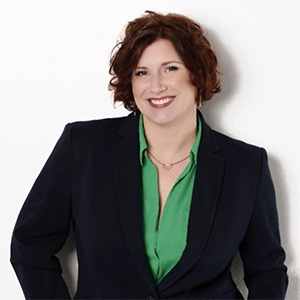If you want to know what’s going on in the world of COBOL, Dr. Cameron Seay is the expert to turn to. As a semi-retired adjunct professor at East Carolina University (ECU) in Greenville, North Carolina, he calls himself a “practicing technology evangelist.” He believes information technology will renew society’s interest in knowledge.
Beyond teaching, Dr. Seay serves on the Governing Board of The Open Mainframe Project and co-chaired its COBOL Working Group. He is a proud member of the Knights of VM, an IBM Champion for System Z, and an author. His influence spans mainframe technology spaces, historically black colleges and universities (HBCUs), and open-source software projects.
Dr. Seay’s venture into the world of mainframes started after two decades in information technology. A few colleagues introduced him to ISPF, which ignited a new passion for educating about mainframe technology, leading him to realize the accessibility of the field to all.
For the past 18 years, Dr. Seay dedicated his expertise to teaching mainframe technology and pioneering innovative approaches for adults to learn COBOL. A problem solver at heart, he is driven by a deep-seated desire to shift perceptions and encourage individuals to pursue careers in mainframes.
Overcoming the formidable challenges involved in building a nontraditional robust mainframe workforce is his life’s work.
I want to be known as the guy who taught people how to teach COBOL.
Generate interest in the mainframe at universities
Like any good instructor, Dr. Seay covered the basics: “The global economy is dependent on COBOL. That’s a fact. Without COBOL, there would be no global economy today.”
This rings true despite critics deploring the mainframe’s lowly reputation as ancient relics running on an obsolete language. Others claim that mainframes generate little interest because they’re unknown, contributing to the downward trend in a skilled workforce. Educational institutions often consider COBOL unnecessary thanks to cloud, hybrid cloud, and new translation software.
Dr. Seay disagrees with all of these perspectives. He asserts that the mainframe’s visibility is not a problem to solve. It doesn’t need a marketing campaign to generate positive publicity, as the technology’s reliability and functionality speak for themselves. Mainframe technology is “designed to run in the background and just work.” Cameron doesn’t waste time arguing the merits of the mainframe.
We’re not trying to be famous. We’re not even trying to be loved.
We just need people to work on the platform.
For Cameron, generating COBOL excitement means broadcasting career opportunities to attract students. He half-seriously jokes that students are on board with learning mainframe skills the instant he says, “There’s a job to do, and you can make a lot of money!”
Students sometimes express trepidation about the longevity of COBOL coding skills. He counters this with transparency about how mainframe technology fits into a career path.
He brings in IBM distinguished engineers, Zowe open source leaders, and software architects from leading vendors to discuss the mainframe’s ongoing relevance. His courses include modern tools for generating and working withCOBOL, fully aware that everything has to be cloud-aware and cloud-savvy.
College students do not know about this technology. When they learn about it, they love it.
Dr. Seay knew the facts and knew how to interest students. Next, wanted to get COBOL courses in front of students.
Add COBOL courses to HBCUs
While teaching at North Carolina Central University in 2005, Dr. Seay realized that mainframe technology offered a niche in which Black students could flourish.
For one, HBCUs are chronically underfunded, offering fewer educational opportunities. Also, only 5% of mainframe programmers are Black, compared to 57% who are white, and Black mainframe programmers have the lowest salary of any race. The opportunity for improvement was evident.
Why does he focus on the Black population specifically? It’s a gap. Dr. Seay stated, “Because they weren’t being educated. And we need jobs. Everybody needs mainframes. Nobody’s teaching it. So I decided that’s what we’ll teach.” Thanks to his perseverance, accessing COBOL training at HBCUs, community colleges, and online expanded.
I’m teaching to provide career opportunities for Black students.
It’s not without obstacles, however. Dr. Seay and his colleagues pitched multiple colleges and universities on the value and practicality of COBOL, but received numerous rejections. He openly chastises academic bureaucracy and inertia for depriving students of job opportunities by declining to add COBOL coursework.
Yet he has made inroads in increasing COBOL accessibility, despite resistance from academia.
The Open Mainframe Project kicked off in 2016. Its purpose is deceivingly simple: Explore and advance open source. Its many constituent companies and momentum fluctuate. Seay affectionately refers to it as “herding cats.” Although companies who are direct competitors are members, they work together in the Project. He attributes this to the “very well-behaved” culture within the mainframe space.
Through this Project, he’s connected with numerous mainframe instructors, businesses and advocates. Together, they’ve created a free COBOL training, served on panels, and raised awareness of the mainframe.
Free COBOL Trainings
• Open Mainframe Project: COBOL Programming Course
• IBM: Learning COBOL code with VS Programming
• Vijay Kumar via YouTube: Mainframe COBOL
Not content with the status quo, Dr. Seay and several colleagues also wrote a book, Introduction to Enterprise Systems. He also regularly contributes to blogs and thought leadership pieces and speaks on podcasts and panels.
Teach mainframe skills using best practices
One way Cameron enables his students’ success is through programs called “boot camps.” These are not basic military training with ropes and timed runs, but they do mimic elements like being a time-bound, intensely focused, and a small-group learning environment.
“Nothing’s better than a cohort of peers going through a process,” he said proudly. “I can prove that this is the way to teach it.”
This approach is a direct application of his Ph.D. in educational psychology. He specifically studied—and applied—best practice teaching methods.
COBOL is one of the simplest programming languages available.
One boot camp he runs involves 20 students and lasts 12 weeks. The program is often sponsored by a company looking to hire skills for its clients. The curriculum covers agile for a week and then moves into ISPF, JCL, TSO, VSam, CICS, COBOL, and Db2. By the end, the students are professional-level programmers who can populate tables. Many have start dates for jobs before they even finish.
Something unique about these cohorts is who joins. Many have never touched a mainframe, and few have coding experience. Cameron is adamant that someone doesn’t need to be a computer scientist or study engineering to work on the mainframe platform. His encouraging perspective appeals to all stages.
“If I didn’t enjoy working with newbies, I’d be at North Carolina State or Georgia Tech. I welcome the challenge to introduce the novice to the wonders of IT.”
He illustrates this by talking about one of his most successful students, who studied social welfare as an undergraduate. She attended a six-hour boot camp on Saturday and Sunday for a month. Now, she makes an impressive living working in the mainframe space with her degree in social welfare.
Cameron’s courses and boot camps firmly emphasize mastery, and allow him the freedom to put his Ph.D. into action. “It’s not about anyone being smart or dumb,” he emphasized. “Effort will win 99% of the time.”
Plan for future mainframe needs
Cameron laughed when asked if mainframes will disappear as businesses move to the cloud. “You can’t defy the laws of physics,” he chuckled. “The cloud is an option, but it takes orders of magnitude to even parallel the performance of a mainframe.” His recommendation: “Just use the mainframe.”
He views AI as a complementary tool that does not threaten traditional coding practices. He is confident that no tool can do what humans do.
However, Dr. Seay added,developers who use AI will become more effective than those who don’t. Also, IBM’s Z/os 16 with embedded real-time AI analysis offers extensive, new possibilities for every developer to explore.
Measure mainframe education success
One hard truth is that a Ph.D.-trained technologist with decades of mainframe experience could choose more prestigious paths. There is a tradeoff in working at community colleges, HBCUs, and nontraditional settings. But Dr. Seay isn’t in this field for accolades. Instead, he considers his satisfaction and student employment rate his success.
Seay credits the mainframe for an unexpectedly fulfilling career: “The mainframe space has given me a life beyond my wildest imagination in terms of the enjoyment I get from it.”
To illustrate this point, he mentioned a student with disabilities who didn’t complete several assignments. Cameron set up a video conference call with the student and parent to guide them through the work:
“Even though he learned slower than we do, he’s perfectly capable of doing this work and willing to put in the work. I would show him something once, and he would remember how to do it. Then he would just do it by rote memory. That was one of the most enjoyable sessions I had with a student in my life!”
Dr. Seay measures success in a rather unorthodox way for an academic. He doesn’t focus on the number of journal articles published or gaining tenure. Instead, Cameron counts students employed in the mainframe field.
“What I’m most proud of,” he offered, “Is that I’ve got multiple students making over $250,000 who are under 40 years old.” Cameron estimates he’s helped more than 300 students get mainframe jobs.
Dr. Cameron Seay’s dedication to mainframe education and advocacy continues to transform countless lives and pave the way for new professionals. By viewing obstacles as opportunities, his commitment to inclusivity shapes the future of COBOL and the mainframe workforce.









0 Comments